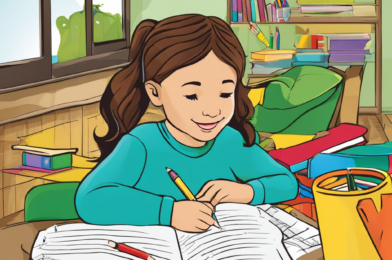Parents often ask how they can raise kind children who care about others and are mindful of their feelings. Teaching empathy and compassion is a crucial aspect of parenting, and it begins with understanding the importance of these traits in society. Research suggests that children who exhibit empathy and compassion tend to be happier and more resilient, and they contribute to a more positive and supportive society. So, how can parents foster these essential qualities in their children?
First and foremost, parents are role models for their children. Demonstrating empathy and compassion in your daily interactions is a powerful way to teach these values to your kids. When you show genuine concern for others and consider their feelings, your children will notice and emulate your behavior. Create a safe and nurturing home environment where family members can openly express their emotions and feel understood and supported. This foundation will help your children develop empathy towards others.
In addition to leading by example, it’s important to have open conversations about empathy and compassion. Discuss scenarios from books, movies, or real life where someone is experiencing strong emotions. Ask your children how they think the person feels and why. By encouraging this type of dialogue, you’re helping your children recognize and understand emotions, which is a fundamental aspect of empathy.
Storytelling is another effective tool to foster empathy. Sharing stories from your childhood or personal experiences where you’ve shown kindness can inspire your children to do the same. Reading books together that feature compassionate characters can also spark conversations about empathy and reinforce the importance of kindness.
It is also important to teach children to take action when they witness someone in distress. Encouraging them to help a lonely peer at school, or involving them in volunteering and charitable acts will help them see the impact of their actions on others. This will not only make them feel good about themselves but will also reinforce the value of empathy and compassion in their lives.
Empathy and compassion are like muscles that need to be exercised and strengthened over time. Creating opportunities for your children to interact with others from diverse backgrounds and encouraging them to consider different perspectives will challenge their empathy skills. Through these experiences, they will learn to recognize and respect the feelings of others, even if they don’t share the same viewpoint.
In a world that often feels divisive and filled with negativity, raising kind children is more important than ever. By teaching empathy and compassion, we can empower our children to make a positive impact on those around them and contribute to a more caring and supportive society. Let’s face it, we could all use a little more kindness in our lives!
So, start small and incorporate these teachings into your daily lives. Whether it’s holding the door open for someone or offering a listening ear to a friend in need, every act of kindness counts. And remember, by fostering empathy and compassion in your children, you are not only raising kind kids but also helping to create a better world for future generations.










